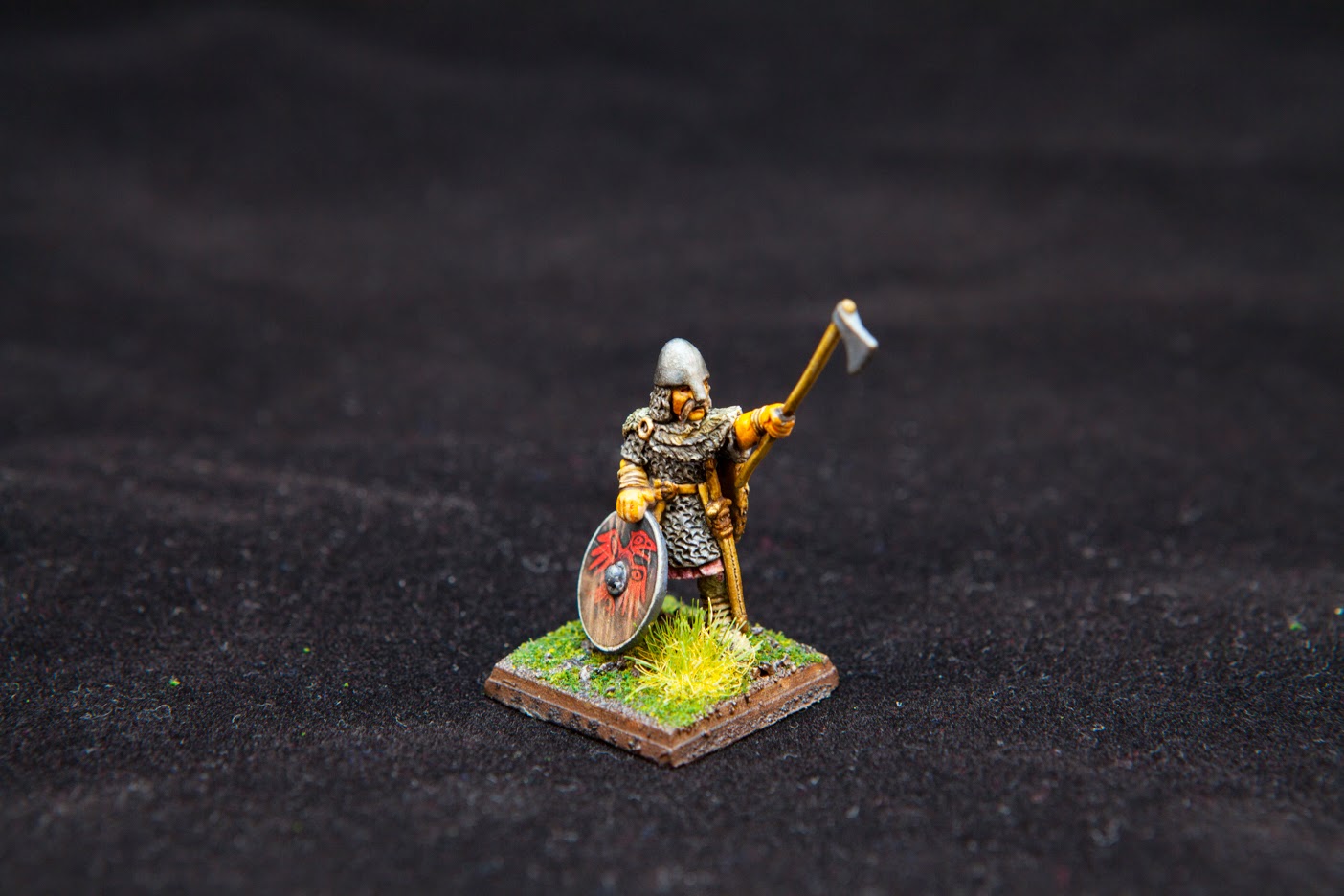Welcome to the first Bolt Action Battle Report from Cheatin' Steve's.
OK, so this isn't exactly a Bolt Action battle report. Because I do not have any WW2 miniatures painted, my Son, Connor, and I decided to use IG Steel Legion models as Germans (mainly because of the sweet heavy bolter models) and Orks as US infantry. This is pretty appropriate because the US special rule in Bolt Action allows rifle/BAR models to advance and fire without penalty-pretty Orky.
Forces:
Steel Legion (Late War German)
3 Squads: NCO with Submachine Gun, MG42 team, 3 riflemen
1 Officer with Veteran (2x submachine guns)
Orks (Late War US Army)
2 BAR Squads: NCO with submachine gun, BAR, 6 riflemen
1 Sniper team (2 models)
1 Officer with Veteran (2x submachine guns)
Mission: Maximum Attrition
For referencing the pictures, I'm at the top of the board, Connor is on the bottom.
Turn 1: Our forces move onto the board. Connor moves one MG42 squad onto each flank. I place a sniper on my far right flank (on top of the tall building in the upper left corner of the photo) and run one BAR squad 12" onto the board.
Turn 2: Connor moves his third MG42 squad and HQ into the center of his line. I give my snipers an ambush order and move my HQ up behind the BAR squad on my right. My second BAR squad ignores my orders to advance onto the table. Insubordinate fucks.
MG42 Heavy Bolter team set:
Ork Sniper team (YES, I SAID THAT) has commanding fields of fire
MG squad moves into position
Orks skulking behind cover
Turn 3: Connor inches his squads forward, positioning them to establish an engagement area when the time is right (while staying out of sight from my sniper team). I move my BAR squad and HQ forward on my right flank, keeping behind cover.
Turn 4: Connor establishes his engagement area by moving his MG42 squads into the open and onto rooftops. My sniper fires at the MG42 in the center but fails to cause a casualty. I consolidated the BAR squad and HQ behind cover on my right, while the second BAR squad finally obeys orders and moves up behind the first squad and HQ.

Turn 5: Connor stays put, waiting for me to enter his engagement area. My sniper team refuses my order to fire, but the BAR squad on my far right advances and destroys the MG42 team on Connor's left flank. This launched an extensive rules review which determined that Connor could have removed non-MG42 models that were out of line of sight from my units, though he opted to remove the MG team. It ended up a moot point because of what will happen in Turn 6, but I get ahead of myself. Throwing caution and tactical acumen to the wind I race my second BAR squad forward into Connor's engagement area in a vain attempt to gain the cover of the building in the lower left. I'm banking everything that I will get first draw next turn and move the squad safely into the cover of that building.

Turn 6: Connor totally catches me with my pants down. He draws the first two orders, meaning that he can fire at my vulnerable BAR squad with two MG42 squads. The MG42 squad on the right does its job and kills two models from the BAR squad. But then the MG42 squad in the center rolls a FUBAR (double 6's), panics, and fires on Connor's own squad on the left, annihilating it. This gives me an assailable flank, and I press my advantage.
Connor's MG squads sight-in on my defenseless Orks
Avoid this:
Turn 7: Connor's left flank is turned, so the outcome is pretty academic at this point. Being a hardcore gamer, he keeps his Steel Legion troopers firing at the BAR squad in his engagement area, piling on casualties and pin markers, but the Orks manage to pass their morale roll and stay in the game. I fire at the MG 42 squad in the center with my sniper and with my BAR squad that is advancing on the left.
Turn 8: We keep playing because we can, though the outcome is already decided. Connor's MG42 squad on the right causes a casualty on my advancing squad, but not before the BAR squad annihilates the MG42 squad in the center. My snipers manage to kill a soldier in the remaining MG42 squad, but fail to disable the machine gun itself.
Turn 9: To the bitter end. I get the drop on activations this turn and complete my sweep of Connor's line. He is left with his HQ sheltering behind cover in the center.
Reactions. This was a very rudimentary game, with my Son and I getting a feel for the mechanics using small forces. Big thanks to Connor for sticking with it after his panic-stricken squad in the center lost the game for him.
Our first impression is that this game responds very well to real tactics (unlike Warhammer 40k). The alternating activation is awesome, the prohibition on pre-measuring any distances, along with the FUBAR rule (which caused catastrophic panic in Connor's force and lost him the game), represent the fog of war really well. Competitive/strategic gamers will not like this game due to its unpredictability and lack of control (though one does have the opportunity to construct douchy, optimized lists if one wishes to depart from historical reality). Narrative/tactical gamers will enjoy Bolt Action for its entertaining flow and tactical realism.
FOR THE RECORD: THIS WAS THE MOST FUN GAME OF 40K I HAVE PLAYED IN OVER 20 YEARS. Suck it, GW.
I'm looking forward to more.

























